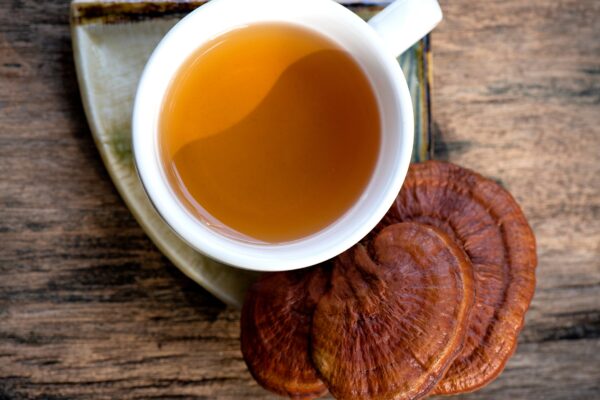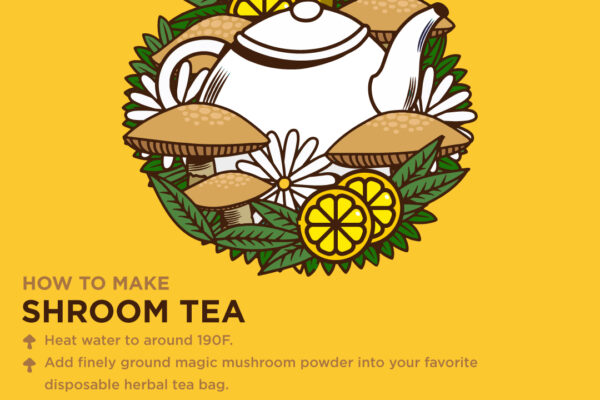Blog
How to Store Mushroom Tea
As functional mushrooms have grown increasingly popular, mushroom tea has emerged as an innovative and convenient way of consuming these powerful fungi. From chaga to cordyceps and turkey tail varieties, mushroom tea offers numerous health advantages.
These drinks are typically packed with antioxidants, a chemical which reduces free radical damage and supports equilibrium. Furthermore, they act as natural adaptogens for added support during difficult times – making them an excellent way to start off your day right or wind down at the end of it!
It’s best to store it in the fridge
Mushroom tea can be an enjoyable and healthy addition to your daily routine, be it as an early morning wake-up beverage or relaxing evening beverage. Studies have revealed numerous health benefits associated with mushrooms tea consumption such as increased energy and improved immune system health; however, proper storage is key for keeping its quality and potency.
Mushrooms are delicate and perishable foods, susceptible to moisture loss and bacterial breakdown that shortens their shelf life at room temperature by days or even hours. That is why it is crucial to store mushrooms correctly in the fridge; otherwise they risk losing flavor, texture and nutrients before even being harvested! Infected mushrooms may quickly wilt or spoil and no longer provide health benefits when consumed as food.
For long-term storage of mushrooms, either drying them for long-term storage or freezing them is an effective strategy. Drying is often preferred since it doesn’t require special equipment – simply clean off any debris before spreading them out on a surface that allows adequate airflow and prevents moisture accumulation. After about a week has passed, they should be completely dried out and can then be stored airtight containers such as glass jars.
Make mushroom tea by heating water to boil and steeping for at least 15 minutes, then straining off. This herbal beverage is full of antioxidants and beneficial bacteria which promote a healthier microbiome and help support natural immunity – it may even increase energy levels while improving digestive health.
If you want to brew your own mushroom tea at home, follow these tips for maximum quality and potency. Chaga mushroom tea is well known for its immune-enhancing benefits thanks to beta-glucans present within its structure that help strengthen immunity cells against infections while increasing energy levels, decreasing inflammation levels, and improving sleep quality.
Mushroom tea can help combat fatigue and depression while improving focus and concentration. Furthermore, mushroom tea is known to aid healing as it serves as an adaptogen that helps the body adapt to stress. Furthermore, mushroom tea may assist cancer patients by alleviating chemotherapy-related side effects like vomiting and nausea while providing relaxation and improving mood; ultimately helping patients feel more optimistic and positive during treatment.
It’s best to store it in the freezer
Mushroom tea is an easy and delicious way to experience psychedelic mushrooms. You can create it using either fresh or dried mushrooms, and store it easily in the freezer. However, freezing can significantly decrease potency as psychedelics are highly sensitive to temperature and moisture changes; Chaga can even lose some medicinal properties if left too long in a frozen state if left too long in its container with lid on. To prevent this loss in potency and preserve its medicinal qualities it’s best if frozen with lid attached so the best results are achieved. To do this it best freeze the mushroom tea in a container containing lid so as not to lose potency due to temperature and moisture fluctuations within its container allowing it to keep freshness – giving a very nice flavourful tea experience that keeps for weeks in between!
When making mushroom tea, use only premium quality mushrooms for optimal medicinal effects. Selecting an effective strain is also key as different species have unique effects – for instance Chaga mushrooms are among the most sought-after health supplements today due to their abundance of B-complex vitamins and potassium content, known to support immunity, encourage natural energy production in your body, as well as helping with natural energy production in general.
Use of a dehydrator can also help preserve the flavors and aromas of mushroom tea, while simultaneously decreasing how much liquid is lost when they’re cooked. Dehydrating mushrooms is a fast and straightforward process you can complete at home.
If you have an abundance of mushrooms, freezing some may be the best solution to prevent spoilage in your refrigerator and to give yourself time to decide how best to prepare them once fully thawed out. Once done so, they can be added into soups, stews or any other dishes which require cooking.
To avoid mushrooms absorbing too much water, steam them first before freezing them. Do this by heating a pot of water with lemon juice added, placing mushrooms in a steam basket, and boiling for approximately 2-4 minutes before submerging in an ice water bath for equal length of time before draining and placing on kitchen paper-lined tray for freezing.
Mushrooms don’t last as long as other vegetables and fruits, making proper storage essential. Refrigerating can lead to mold growth and bacteria growth; freezing is recommended instead. You may store mushrooms there for up to one year but keep in mind they may lose some potency as the conversion from psilocin to psilocybin takes place when frozen; this conversion can be reversed by exposure to acid like stomach acids or lemon tek. Furthermore, being high-in-water content mushrooms are particularly vulnerable to freezer burn.
It’s best to store it in the pantry
Mushrooms can last up to one year when stored correctly and dry, though their shelf life can decrease in just seven days when exposed to excessive heat or moisture, becoming slimy and smelly – rendering them unfit for consumption.
To combat this issue, use a desiccant to keep the air in your storage container dry. These desiccants are available from many stores and work by absorbing moisture from the air; simply place one at the bottom of your storage container before adding your shrooms on top. Remember to replace it every so often since its capacity for absorption will decrease over time.
Storage options include placing mushrooms in a dark, cool location in your pantry. This will preserve their quality while prolonging their shelf life; just be sure to regularly inspect for signs of mold growth or pungent odors that could indicate spoilage and throw any suspicious mushrooms away immediately so as not to contaminate the rest of your supply.
If you prefer something a bit milder, another way of enjoying mushroom tea may be transforming them into powder. When mixed directly with hot water, this form of mushroom tea offers nutritional benefits and allows you to reap their medicinal properties without fully consuming them whole.
Mushrooms are fungi, making them highly susceptible to mold and decay if stored incorrectly. Freezing mushrooms is the optimal method for prolonging their shelf life and maintaining flavor and potency over four years of storage.
Though it’s safe to store mushrooms in the freezer, you should make sure that they are monitored frequently for signs of spoilage. Mushrooms that have gone bad will become slimy and wrinkled with dark spots appearing unexpectedly; additionally direct sunlight can hasten their deterioration quickly.
Mushrooms can withstand direct light exposure for 24 hours before starting to degrade and fade in color; when stored in darkness they’ll stay fresh up to one year longer.
Chaga mushroom is an effective anti-aging superfood and has been shown to lower cholesterol, blood pressure, combat diabetes and boost immunity. To get maximum benefit out of chaga’s properties it should be chosen and prepared correctly; make a cup of Chaga tea by boiling some water with ground chaga added and let it steep for at least 20 minutes, so its beneficial compounds can be extracted.





